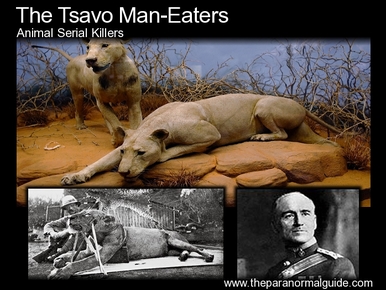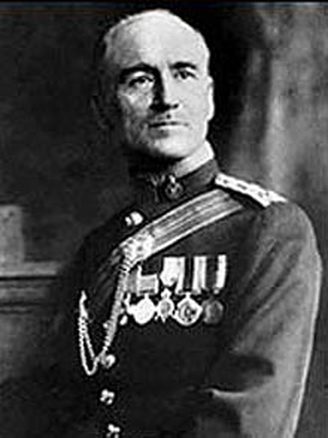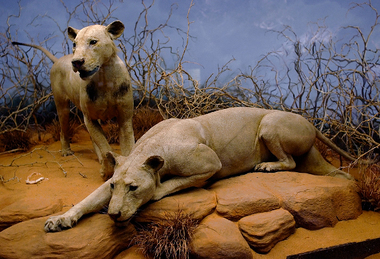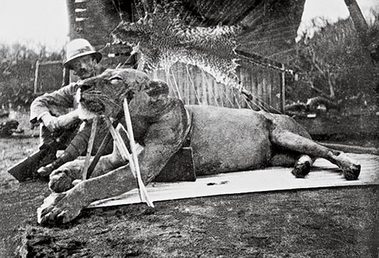
Nothing the people did seemed to deter these feline serial killers... and only death stopped their deeds.
Animal Serial Killers?
 Lt. Col. John Henry Patterson.
Lt. Col. John Henry Patterson. From March through to December, 1898, these two maneless lions were responsible for anywhere between 31 and 100 deaths during the construction of the Kenya-Uganda Railway. The unusual thing about these lions was that they stalked their prey. They went to ridiculous lengths to kill. But most disturbing of all, they killed because they liked it, not because they were hungry.
The British Empire started a project to build a railway bridge over the Tsavo River in Kenya, to connect Kenya to Uganda. The project, which began in March 1898, was led by Lt. Col. John Henry Patterson. Not long after starting construction, workers at the campsite reported that two maneless male Tsavo lions were stalking around, and before long, they had dragged an Indian worker from his tent in the middle of the night, and devoured him.
 The Tsavo Man Eaters on display.
The Tsavo Man Eaters on display. The superstitious Indian workers named the Lions “The Ghost and the Darkness”, and started to leave their jobs, fleeing back to their native lands in fear. Of course, this completely disrupted the building of the railway bridge, so Lt. Col Patterson knew it was time to act.
Patterson set traps to try and catch the lions, leaving goats as bait, but they seemed to know the traps were there (and still managed to eat the goats). He made viewing platforms at the tops of trees, and stationed himself in it at night, to try and ambush the lions.
 Patterson with the first of the lions to die.
Patterson with the first of the lions to die. It was enormous! Measuring nine feet, eight inches long from nose to tip of tale, it took eight men to carry back to camp. Although half the battle was won, Patterson knew there was another one out there, and it also needed to be stopped.
It took 20 days for Patterson to finally finish the job. He killed the remaining lion on 29 December, claiming to have shot it at least nine times. The lion died, clawing at the tree, trying to reach Patterson. The work crews all returned when they heard the Lions had been bested, and completed the bridge.
Although it is likely that the lions killed between 28 and 31 people, Lt. Col. Patterson was known to claim that there were 135 victims in total.
Patterson had the carcasses of the lions skinned and used as floor rugs. In 1924 he sold them to the Chicago Field Museum for US$5,000. The skins were in terrible condition. The scientists at the museum reconstructed the skins and you can find them on permanent display. Their original skulls are also nearby.





 RSS Feed
RSS Feed
